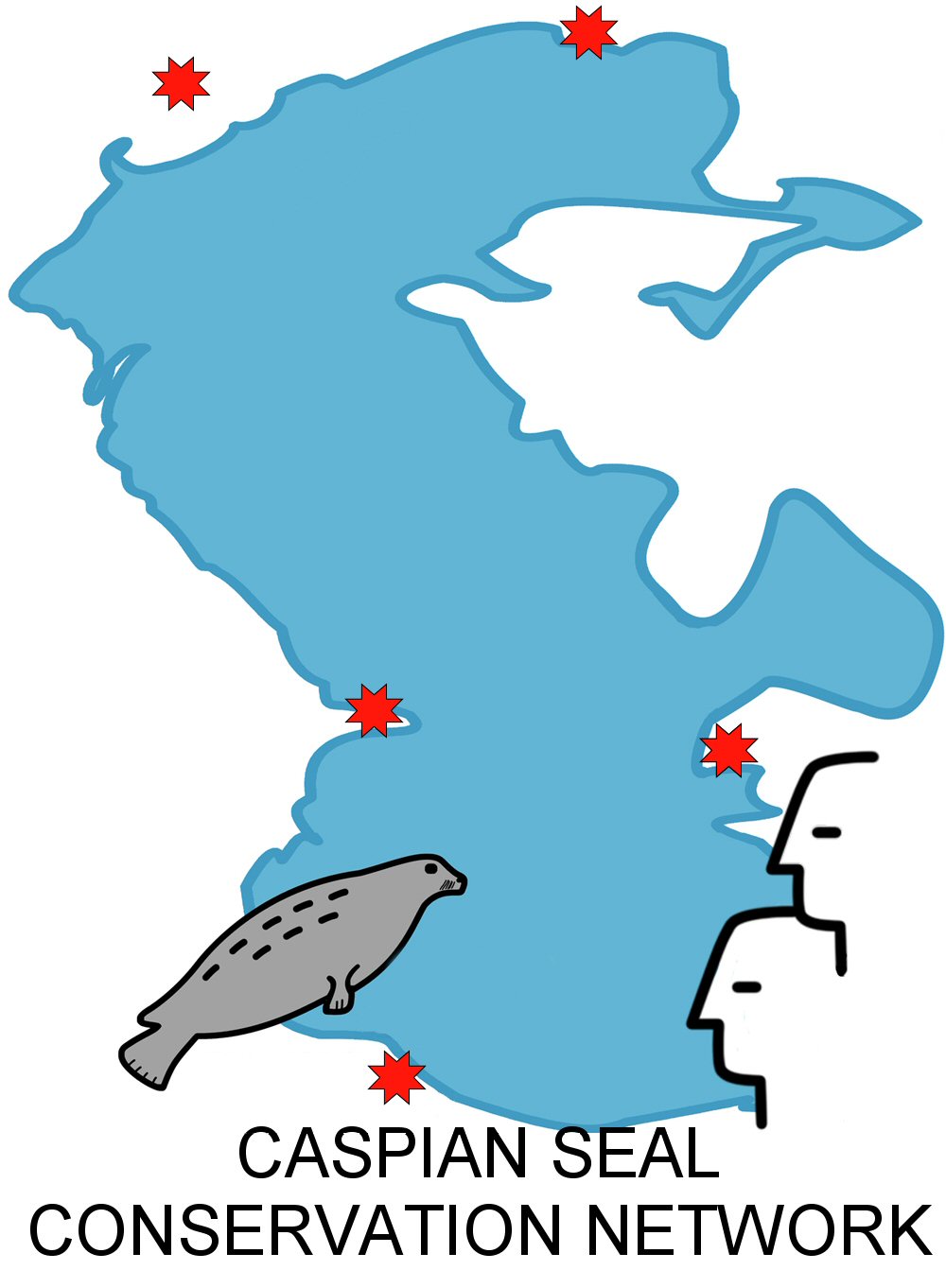About the Caspian Seal Project
History
The Darwin Caspian seal project grew out of a conversation in 1997 at a World Bank meeting about the new Caspian Environment Programme (CEP), when Liz Rogers, then environmental manager of the International Oil company in Azerbaijan (AIOC) expressed concern to Sue Wilson (attending for the World Bank) that there were a lot of dead seals on the beaches near Baku, on the Apsheron Peninsula. Within a few weeks the World Bank and AIOC together arranged an investigation, and tissue samples taken from dead seals on the beach produced further worries in the form of very high levels of DDT residues (Hall et al., 1999) and viral traces of the lethal and highly infectious Canine Distemper (CDV) (Forsyth et al., 1998). A biologist in Baku, Dr Tariel Eybatov, had in fact been keeping a little-known record of high seal mortality on the Apsheron Peninsula over the previous 30 years – so this was a matter for considerable concern.
These concerns produced the impetus for the World Bank to launch their investigation into the causes of seal mortality and how pervasive DDT and other contaminants might be in the Caspian ecosystem. This ‘Ecotox’ project started just in time for the new international ‘Ecotox’ team to investigate another mass mortality of Caspian seals, which hit the headlines in the spring of 2000. The team’s veterinary pathologists, led by Dr Seamus Kennedy (Department of Agriculture, Northern Ireland), Dr Paul Jepson (Institute of Zoology, London), Dr Tom Barrett (Institute of Animal Health, Surrey) and Dr Thijs Kuiken (Institute of Virology, Rotterdam), diagnosed CDV as the principal cause on this occasion, but the team also drew attention to many seal deaths both in fishing nets and a continuing commercial hunt of several thousand newborn pups every year.
With so many seal deaths the questions started to be asked increasingly often about how many surviving seals actually remained in the Caspian and how many deaths every year the population could sustain. By the end of the ECOTOX project in 2002 plans were already afoot with Dr Simon Goodman at the Institute of Zoology in London to initiate a new population survey to determine the actual breeding population size, trends and distribution, and continue to evaluate all known threats to the seal. The new team dedicated to this survey is called CISS – the Caspian International Seal Survey. From this new effort the new Darwin Caspian seal project was born.
Scope of Darwin Caspian Seal Project

- The biological scope of the Darwin Caspian seal project is wide-ranging and includes establishing a programme for the systematic monitoring of population size distribution, health and diet of Caspian seals, and assessment of threats from introduced invasive species, disease, pollution, fisheries by-catch, climate change and habitat degradation.
- A Seal Conservation Action and Management Plan (SCAMP) is being developed with Caspian scientific partners in the CSCN in all five littoral states. Collaboration with regional stakeholders has been initiated through the Caspian Environment Programme (CEP) in order to translate research findings into practice and implement the conservation plan.
- The project will work with local communities to reduce sources of seal mortality such as hunting and fisheries-by-catch.
- The project will further enhance the capacity of the Caspian region scientists to identify and respond to threats to Caspian seals, and have the species more widely recognised as a vulnerable sentinel species for Caspian marine biodiversity.
- The project will work with local communities to raise the profile of Caspian seals as a flag-ship species for the health of the Caspian ecosystem.
Caspian Seal Conservation Network (CSCN)

The CSCN evolved as a seal specialist group from the Caspian Bioresources Network, established in 1997 through the World Bank. Dr Tariel Eybatov, of Baku, Azerbaijan was its first member, arising out of his close involvement with diagnosing the 1997 seal mortalities in Azerbaijan and the initiation of the ECOTOX project. Dr Hormoz Asadi from Iran, Dr Pavel Erokhin from Turkmenistan and Dr Aidyn Kydyrmanov of Kazakhstan all also worked with ECOTOX, and then became part of the new seal network. Since Dr Asadi's death in January 2008, the Plan for the Land NGO is continuing the project in Iran. In Kazakhstan the Institute of Fisheries and the new Instiitute of Hydrobiology are both CSCN members. In Russia the International Oceonographic Institute (IOI, based at the University of Astrakhan) is the CSCN focal point. In Azerbaijan the CSCN is based at the Institute of Geology of the Azerbaijan Academy of Sciences and also the Museum of Natural History in Baku. In Turkmenistan the project has been working with the Institute of Deserts, Flora and Fauna, and is now working with UNDP and the Khazar Reserve.
The CSCN was adopted as a working network at the Darwin project’s initial meeting in Baku in September 2006. The CSCN will be linked closely with the Caspian Environment Programme and with the wider Bioresources Network in the Caspian.
